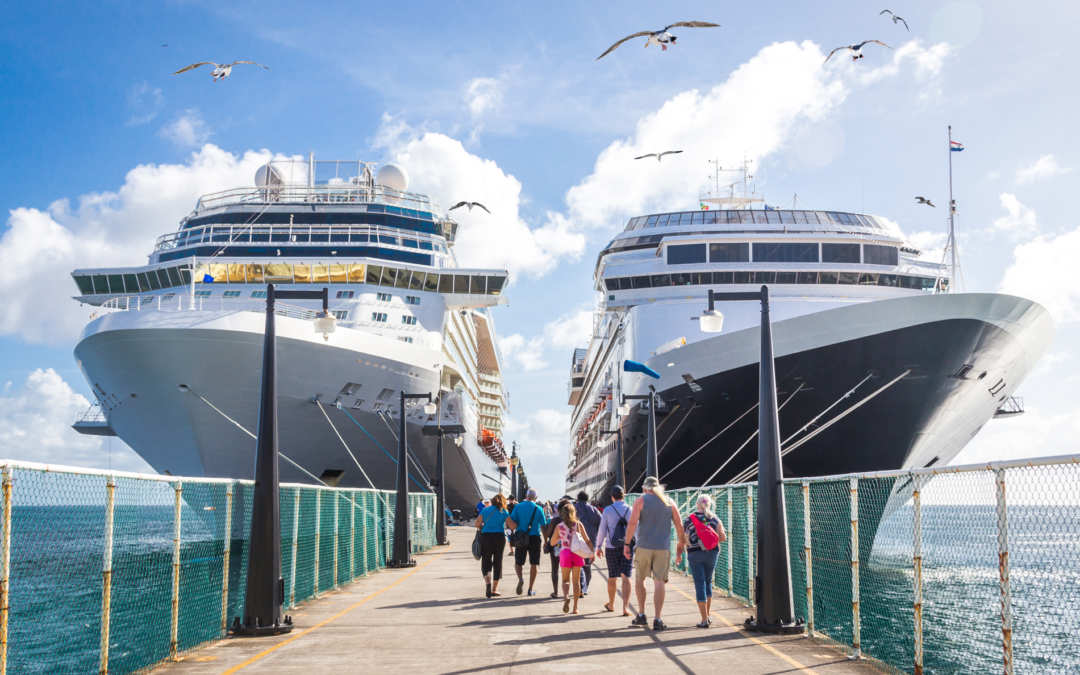While AI is already widely being used in the cruise industry for fuel efficiency and route optimization, there remains huge potential for AI to take on more of a guest-facing role. Imagine a cruise where, instead of just relying on the crew for accurate information, passengers could interact with AI to answer their questions, book excursions, and even design their own custom itineraries. The technology is already here, so why aren’t more cruise lines adopting AI assistants for their guests?
In 2019, MSC Cruises tried to tackle this with their in-cabin assistant, Zoe. This voice-enabled AI was designed to answer questions in multiple languages, help with bookings, and even provide billing information. Despite its potential, Zoe is being quietly phased out across the MSC fleet. Why? The costs of building and maintaining such a system, especially one that had to function in seven languages, were likely astronomical. Creating a custom AI before 2023 was like building a bridge by hand—possible, but incredibly expensive and time-consuming.
However, the recent strides in AI technology has made it more accessible and affordable. So how can you adopt AI onboard your ships today? First, it’s important to understand the challenges and limitations. Below we give an overview of some of the biggest difficulties you should be aware of, along with solutions.
Barriers to Onboard AI Adoption—and How to Tackle Them
Internet Connectivity
Despite advancements like Starlink, reliable internet access on a cruise ship is still a luxury rather than a guarantee. AI systems, particularly those relying on large language models (LLMs), require consistent connectivity to function at their best.
Solution: To avoid interruptions caused by limited internet availability, cruise lines would need to either host a backup LLM onboard or design the system to downgrade gracefully. For example, an AI-powered assistant could politely inform guests when it’s temporarily offline rather than leaving them hanging, or explain that they’re interacting with a less reliable onboard-based assistant.
Onboard Hosting
Running an LLM on a ship has its limits. While modern servers can generally handle the load, if a few hundred passengers start querying the AI simultaneously, you might find your system struggling with performance. If you opt for high-powered AI hardware with loads of GPUs, you’re looking at a price tag of $30,000 to $50,000—plus a significant increase in energy consumption.
Solution: Investing in more efficient, scalable hardware or designing AI systems to limit resource-heavy tasks could mitigate these issues.
Data Integration
One of the trickiest challenges is ensuring the AI has access to accurate, up-to-date information. Cruise lines often have data scattered across multiple systems—PMS, CMS, CRM, and even spa management systems. Pulling all this data together to give the AI a single “source of truth” is a formidable task.
Solution: Begin with data unification projects that organize and streamline your information systems before layering AI on top. OnDeck’s Cruise Director Middleware now supports Retrieval Augmented Generation (RAG) for these kinds of use cases!
AI Hallucinations
An AI giving incorrect information or hallucinating (making up things) could be more than just a minor inconvenience. It could lead to disappointed or even endangered guests. The stakes are high when your AI misguides someone that wastes their precious vacation time, or worse, misleads them during an emergency situation.
Solution: Extensive training, rigorous testing, audit trails with tools like Langfuse, and clear communication protocols are necessary to minimize these risks. And always have a human in the loop for critical queries.
Training Data
Good AI requires good training data. But do you have enough of it? If your cruise line has no historical records of passenger queries, building an effective AI might be an uphill battle.
Solution: Start by implementing a system to gather shipboard Guest Services and shoreside Customer Services data now, so you have a solid foundation for future AI applications.
AI Applications Ready for Implementation Today
Despite these challenges, the potential benefits of utilizing AI on cruise ships are enormous. Below are just a few examples of how LLMs could be implemented today onboard:
-
- Guest Support: An AI could handle routine questions passengers usually ask crew members, speeding up service and freeing up staff for more complex tasks. At Sourcetoad, we’re already working on similar solutions using data gathered from our Cruise Director Platform.
- Content Filtering: AI could analyze news articles displayed on digital signage and filter out anything that might dampen the being on holiday spirit—like a downturn in the stock market or bad weather at home.
- Sentiment Analysis: Near real-time sentiment analysis of digital surveys could provide invaluable insights into guest satisfaction, allowing cruise lines to address issues before they escalate.
- Custom Itineraries: AI could design personalized walking tours or shore excursions based on individual preferences, enhancing the overall guest experience.
- Language Translation: Multilingual AI could bridge the gap between guests and crew, making communication smoother and more efficient.
- Voice-Activated Services: Imagine ordering room service by simply speaking to your cruise line’s mobile phone app or in-cabin phone—no more waiting on hold, just immediate, hassle-free service.
- Guest Support: An AI could handle routine questions passengers usually ask crew members, speeding up service and freeing up staff for more complex tasks. At Sourcetoad, we’re already working on similar solutions using data gathered from our Cruise Director Platform.
Conclusion
While the challenges of implementing AI on cruise ships are significant, the benefits are hard to ignore. By freeing up crew time and providing guests with immediate and accurate responses to their needs, AI could revolutionize the cruise experience for both guests and crew. However, it is essential to approach this technology thoughtfully, with a clear plan for managing the unique demands of conditions onboard a cruise ship and ensuring accurate, timely information is provided to guests. After all, the last thing you want is your AI assistant throwing a tantrum in the middle of the Atlantic Ocean.
